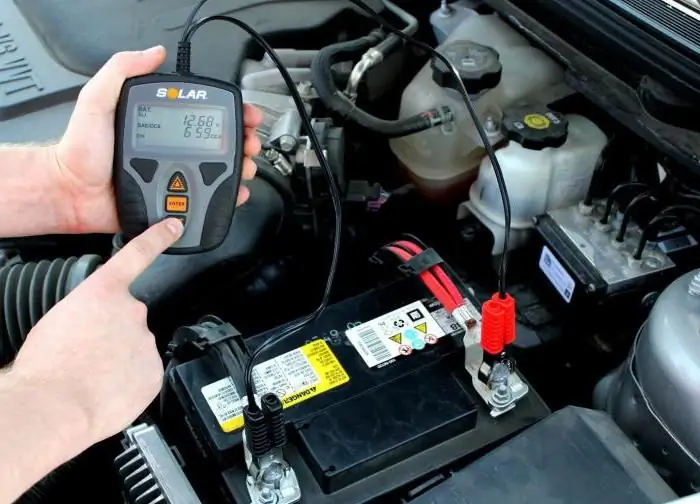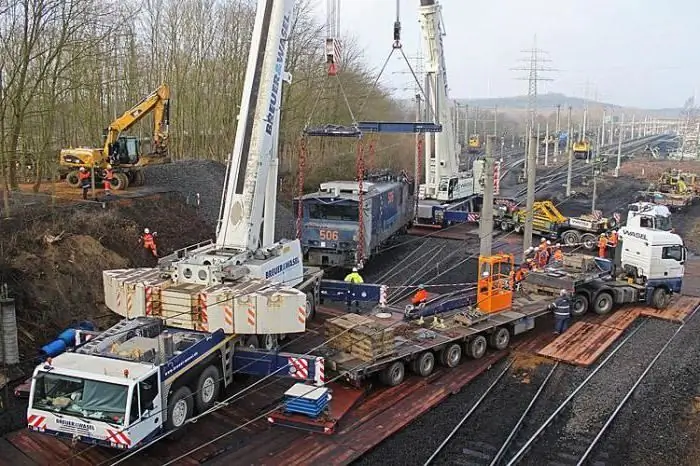2025 Author: Erin Ralphs | [email protected]. Last modified: 2025-01-22 21:14:11
The beginning of the 21st century amazes everyone with its discoveries and ambitious plans. Progress does not stand still, covering all large areas. Since the creation of the battery, it has undergone many changes, but to this day it is the leader among non-stationary sources. In everyday life, we are surrounded by a large number of different batteries, ranging from the smallest in phones to huge ones in special equipment.

In this regard, battery recovery is of particular demand. A battery is considered to be a device for storing energy due to a chemical reaction for its subsequent use. Any car owner should know that it is the electrolyte in the battery that performs the reaction that facilitates its charging and further use. This technology was discovered back in the 18th century, and since then only materials and components have changed, but the principle itself has remained the same.
The most obvious sign of a low battery

is considered a lack of power to start the starter and then start the engine. There may be several reasons for this, and the easiest way to get it back into service may be a simple charge. If this does not help, then you have two options - either restoring the battery, or buying a new one. And this is where opinions differ. Some argue that it is better to buy a new one and not waste your time and effort, others say that the restoration process is not so difficult, and the effect obtained can last for several more seasons.
If battery recovery doesn't seem so difficult for you to do it yourself, then you need to know about five basic methods:
1) Charging with reverse currents.
Reverse current - alternating current with different pulse durations and amplitudes. For each segment of the pulses, the battery is charged and partially discharged. This approach creates ideal conditions for reducing reactions.
2) Recovery with training cycles.
Usually, this procedure is carried out once a year, performing the following steps: fully charge the battery and leave it for 3 hours, adjust its density, and then give a charge for another 30 minutes. The final cycle allows you to evenly move the charge in the electrolyte for the subsequent ten-hour discharge with voltage and density control. Although this technique is effective, it also has its drawbacks.

3) Flushing and replacement of defective elements.
This technique is quite widespread among the people,is one of the most environmentally dirty and labor intensive. Often, the work done does not bring results, and battery recovery becomes impossible.
4) Recovery using impulse currents.
This technique is used mainly by large firms with a large number of specialized equipment. The reason for this unpopularity is the following disadvantages: the high cost of equipment, high energy and labor costs, the duration of the entire recovery process.
5) Additives.
The chemical reaction here underlies the whole process. According to car owners, this principle can be considered short-term, and their subsequent frequent use can lead to a complete stop of any reaction in the batteries.
Regardless of the method chosen, we recommend that you entrust the restoration of the battery to the masters in specialized centers.
Recommended:
Operation and maintenance of batteries. Battery repair. Car battery brands

The article is about batteries. Measures for servicing batteries, their design, varieties, nuances of operation and repair are considered
Car battery, desulfation: recovery methods

The article describes how to restore the battery at home. Do-it-yourself battery desulfation in several ways
Recovery train of Russian Railways. What is a recovery train?

Many people prefer to use airlines, but the railway will not lose its relevance in the near future due to the inexpensive cost of services. But here, as in road transport, various accidents happen. Then a recovery train comes to the rescue, which promptly removes the blockages for the speedy resumption of railway traffic
How to choose a battery: rating of the best. Battery brands

Each car owner sooner or later faces the fact that his "iron horse" needs a new battery. And here comes the problem of choice. After all, the operation of the vehicle as a whole depends on the correctly selected device. The rating of car batteries is designed to help in this difficult choice
What to add to the battery - water or electrolyte? Car battery service. Battery electrolyte level

The main parts of the vehicle should include the battery. During normal operation, this battery is charged while the vehicle is running. But there are often cases when, if other devices in the car malfunction, it must be charged using a special device. Such operating conditions affect the rapid wear of the device. In addition, from time to time it needs to be refueled. Many people often get confused about what to add to the battery: water or electrolyte

